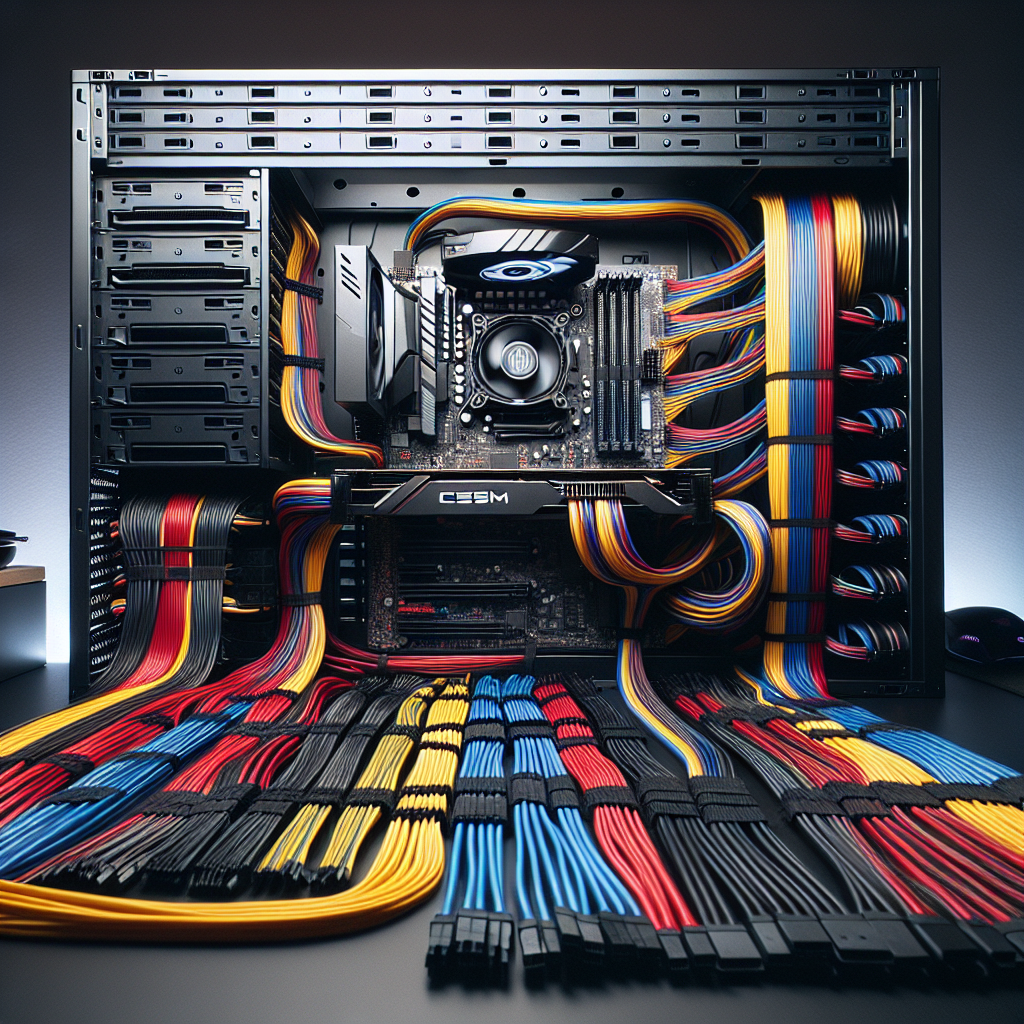One of the most satisfying aspects of building a PC or setting up an entertainment system is achieving a clean, organized look with tidy cables. Not only does this lead to better aesthetics, but it also improves airflow and makes maintenance easier. What is the best way to route cables for a clean build? In this guide, we'll explore various strategies you can employ to achieve the cleanest, most efficient cable management.
1. Plan Your Build
Before you start routing cables, it's crucial to plan out your build. Determine where each component will be placed and measure the length of the cables you will need. This planning stage will save you time and eliminate unnecessary clutter.
Gather Necessary Tools
- Cable ties
- Cable combs
- Sleeves
- Velcro straps
- Cable clips and anchors
- Wire cutters and strippers
2. Choose the Right Casing
Not all casings are created equal. Some have built-in features that make cable management much easier. Look for cases with:
- Cable-routing cable management cutouts and grommets
- Modular designs
- Velcro straps pre-installed
3. Power Supply Units (PSU)
Always prefer modular or semi-modular PSUs. These allow you to connect only the necessary cables, reducing clutter. Make sure to place the PSU in a position that minimizes cable run lengths.
4. Routing Cable Behind the Motherboard
Most modern PC cases come with dedicated space behind the motherboard tray for routing cables. This provides easy management and keeps cables out of sight.
5. Use Separate Paths for Power and Data Cables
To prevent electrical interference and keep a neat look, try to route power and data cables separately. This helps not only in aesthetics but also in system efficiency.
6. Securing and Bundling
Once the routing is done, securing the cables is crucial. Use cable ties, Velcro straps, and clips to bundle cables together and secure them. Aim for tight, neat bundles but avoid over-tightening, which can damage the cables.
Cable Combs and Sleeves
Cable combs and sleeves add a polished look to your build. These tools are particularly useful for aesthetic setups where exposed cables are part of the visual design.
7. Final Checks and Adjustments
Before you power up your system, double-check the entire setup. Ensure that nothing is under tension and that all connections are secure.
8. Maintenance and Upgrades
Periodic checks and updates to your cable management are essential. Any time you add or remove components, take the time to adjust your cable management accordingly.
| Step | Tools/Components Needed | Best Practices |
|---|---|---|
| Plan Your Build | Cable ties, Velcro straps | Map out each component's position before routing |
| Choose the Right Casing | Case with cable management features | Look for cases with grommets and modular designs |
| PSUs | Modular/Semi-modular PSU | Minimize cable run lengths |
| Routing Cable Behind Motherboard | Case with motherboard tray space | Keep cables out of sight |
| Separate Paths for Power and Data Cables | – | Prevent electrical interference |
| Securing and Bundling | Cable ties, Velcro straps, clips | Avoid over-tightening |
| Final Checks and Adjustments | – | Ensure no tension in cables |
Conclusion
Proper cable management not only enhances the visual appeal of your build but also contributes to its efficiency and longevity. With the right planning, tools, and techniques, you can achieve a clean, tidy, and professional-looking setup.
Follow these steps and tips to ensure your cable routing is as clean and effective as possible.




